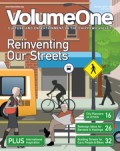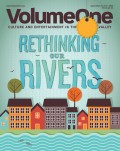Throughout the years, all over the world, key lessons have been learned about what makes a place thrive — a process called “Placemaking.” Here are the 11 principles of Placemaking:
- The community is the expert. The people living and working in a place are the folks who know what needs to be done and how best to do it.
- You are creating a place, not a design. The blueprints for a neighborhood improvement effort are much less critical to its success than other factors, such as a management plan and the involvement of local citizens.
- You can’t do it alone. Finding the right partners will bring more resources, innovative ideas, and new sources of energy for your efforts.
- They’ll always say, “It can’t be done.” When government officials, business people and even some of your own neighbors say it won’t work, what they really mean is “We’ve never done it like this before.” It’s a sign you’re on the right track.
- You can see a lot by just observing. The smartest way to turn a neighborhood around is to first take a close look at what goes on there, watching out for what works and what doesn’t in that particular place.
- Develop a vision. For a community vision to make sense and to make a difference, it needs to come from the people who live there, not from consultants or other outside professionals.
- Form supports function. If you don’t take into account how people use a particular place in the beginning, you will have to deal with the consequences later.
- Make the connections. A great place in a neighborhood offers many things to do, all of which enhance each other and add up to more than the sum of the parts.
- Start with petunias. Little things can set the stage for big changes, especially by proving to local skeptics that change is indeed possible.
- Money is not the issue. If you have a spirited community working with you, you’ll find creative ways around financial obstacles.
- You are never finished. Eighty percent of the success of any good place is due to how well it is managed after the project is done.
Adapted with permission from “The Great Neighborhood Book,” published by the Project for Public Spaces. Visit pps.org/store to learn more.


